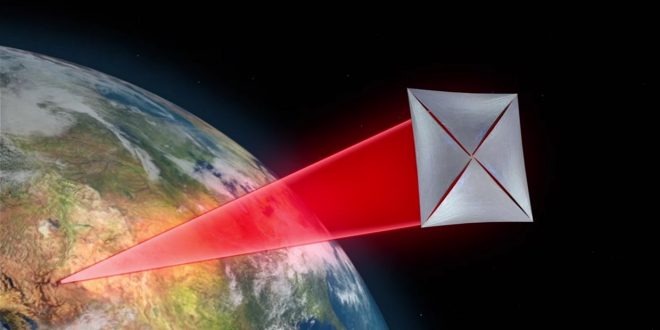NASA is currently working with Stephen Hawking to understand his fantasies of sending a nano-starship to the nearest star system to our nearby planetary group.
In April, Hawking and Russian venture capitalist Yuri Milner announced that they were working together on the Breakthrough Starshot initiative to develop tiny spacecraft that could travel at one fifth the speed of light (100 million mph) using light beams in order to make it to Alpha Centauri, the nearest star system located 4.37 light-years away (25 trillion miles).
The ambitious project wants the tiny silicon chip spacecraft to travel at one-fifth the speed of light in order for it to arrive at Alpha Centauri in 20 years – about 100 times faster than a conventional spacecraft.
However, researchers at Nasa and the Korea Institute of Science and Technology (KASIT) have found a problem with this mind-boggling new idea; the high-energy radiation in space would cause serious defects to the spacecraft by affecting the chip’s silicon dioxide layer. This means the components of the spacecraft would cease to function years before the voyage was completed.
The teams are now working on a proposition to rectify this.
Nasa’s Dong-Il Moon, who led the team of researchers behind the project, presented the findings detailing how to overcome these issues at the International Electron Devices Meeting in San Francisco.
One way to address the chip damage proposed by the team is to select a path through space that minimises radiation exposure. However, this would lead to longer missions and hinders exploration. Another proposed option is to add shielding to reduce damage caused by cosmic rays, but this adds weight to the chip and negates the point of using a tiny spacecraft.
Moon has proposed it is best to let the devices suffer the radiation damage, but design the chip so it can repair itself. This would work by using an electric current to heat the chip contained in the spacecraft, which would heal any damage incurred through exposure to radiation.
The chip would be powered down every few years during the journey, at which point the transistor heating would remedy any radiation-induced defects. The chip could then keep going once it had sufficiently healed itself.
“On-chip healing has been around for many, many years,” Jin-Woo Han, a member of the Nasa research team, told IEEE Spectrum.
During tests in the researchers’ lab, the heating process has enabled flash memory to be recovered up to around 10,000 times and DRAM memory up to 1012 times.
At this stage, it is only very early thinking about how to send the nanocraft into space but the team has said the technique could make lengthy space missions like the Alpha Centauri one “technically feasible”.
The team behind Breakthrough Starshot has said each craft would weigh one gram and cost little more than a smartphone to produce. They will be boosted with cameras, photon thrusters, a power supply, navigation and communication equipment.
As well as the technological hurdles needed to be overcome before the project can launch, Breakthrough Starshot needs to find between $5 and $10 billion to fund the research and developments of the nano-spacecraft.
Agencies/Canadajournal

 Canada Journal – News of the World Articles and videos to bring you the biggest Canadian news stories from across the country every day
Canada Journal – News of the World Articles and videos to bring you the biggest Canadian news stories from across the country every day

